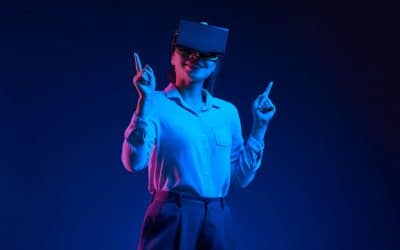Tensegrity counters the notion that the skeleton provides a
frame for the soft tissues to hang upon. Instead of that, tensegrity structures are integrated, pre-tensioned (self-tensioned), continuous myofascial networks with floating, containing discontinuous
compression struts (skeleton).
A rigid column needs to be heavy enough to support the incumbent load above. Internal shears forces are created by the weight of the structure, which in turn would be destabilizing. For keeping keep the structure intact, energy would be required in large amounts. Humans are omnidirectional which means that they are capable of adjusting to every direction, as are all biological organisms, so that the tension elements function at all times in tension regardless of the direction of applied force, while the compression elements in biological structures “float” in a tension network.
Biologic structures and Sharkey’s findings
Ligaments and fascia, bones, and cartilage would do little to support our upright forms if not for the collective activity of an integrated
myofascial system. The latter is made up of surrounding tension-generating muscles and tension-resisting tendons, ligaments and fascia, bones, and cartilage.
Bone brittleness is approximately the same in all animals. Otherwise, animals bigger than a lion such as horses would break and fracture their bones when running or jumping on their slim limbs.
Working elastically at strains around a thousand times higher than strains that ordinary technological solids can withstand, demonstrates that biological tissues behave d
ifferently from non-biologic materials.
Biologic tissues, including muscles and fascia, have n
onlinear stress/strain curves.
Sharkey (2012) provided fresh frozen cadaver images of the f
ascia profunda at the macro level reflecting and creating a body-wide framework or network. This structure can c
hange or maintain shape and form within a fluid base allowing deformation followed by a return to its original state, whilst keeping volume. This creates a stable, yet flexible environment necessary for the
fascia to act as a medium for force transmission.
This new model for b
iologic structures based on the
concept of tensegrity identifies the fascia as the tensional, continuous member. In a tensegrity continuous tensile forces (from the myofascial tissue) provide an “ocean” within which the struts float (in the human body these could be the bones that are
not continuous with each other and they do not transmit compression directly onto each other.). The t
ensional members are continuous and distribute their tension load directly to all other tensional parts.
Tensegrity structures and tissue stress
Tensegrity structures are triangulated allowing
force transmission in
multiple dimensions.
This architectural system for the
structural organization provides a mechanism to
physically integrate a part and whole. Every time we move our arms, the muscles contract, the bones compress, and the skin stretches without any irreversible injury. This is made possible because most of the load-bearing elements of the discrete cellular and extracellular matrix networks that comprise
living tissues rearrange in response to stress. They then return to their original position when they are released, as is observed in all tensegrities.
If stresses are excessive or sustained, then our bodies remodel themselves through “
mechanochemistry”, i.e., force-dependent
changes in molecular polymerization-depolymerization dynamics or alterations of molecular biochemistry. In this way, tensegrity governs how mechanical forces influence the form and function of the living cells that inhabit all of our tissues.
The example of knee joint
Most readers will be familiar with x-rays of the
knee joint. Even while standing the space between the
femur and
tibia is obvious. This space hints at the special architecture of the human form. It is still currently taught that during running, cartilage tissues absorb the crushing forces of three to six times our body weight compressing and crashing down on our joints.
However,
not even NASA has invented a material that could do such a job. It is taught that c
artilage absorbs crushing forces repeatedly, over hours of impact (six times our body weight crushing down on our joints) such as when running a marathon. The
knee joints are frictionless. This tells us
the cartilage is not compressed and therefore has no need to
absorb the impact. That is, not in a healthy joint supported by healthy tissue as opposed to an unhealthy one where
compressive forces damage the cartilage and bone.
The space witnessed at joints is a result of the bones floating in the
tensional connective tissues. Bones are not meant to touch and when they do (and they sometimes do) this is a reflection of something having gone wrong. In effect, the system is not performing, as it should.
What holds the body up?
Imagine the body is standing
upright, and the skin and soft tissues (muscles, fascia, viscera, and all) were to disappear. What would happen to the skeletal system? Of course, it would
crash to the floor. But what if all the bones were removed leaving only the soft tissues? Again it would end as a soft heap on the floor. This begs the question, “what is holding the body up.”
In such a scenario it is easy to conclude that it is the
relationship between the soft and harder tissues continuously working that provide humans with what we call “lift.” It is exactly this lift that protects
the integrity of the joint space.
This description supports the more recently accepted image of a continuous tissue, ubiquitous in nature, connecting left to right, front to back, top to bottom, embracing and permeating the entire body. These
mesenchyme-derived connective tissues provide a body-wide network of communication.
The
visceral organs integrate structurally and physiologically into this system. There are no limb segment boundaries and the smaller bones and joints of the hands and feet fully integrate into the tensegrity model.
Spine as a tensegrity structure
The
spine is a
tensegrity structure that
integrates with the limbs, head, and tail and also to the
visceral system. A
change of tension anywhere within the system, such as the mid-back, is instantly signaled to everywhere else in the body chemically and mechanically. There is a total b
ody response by mechanical transduction i.e., the molecular mechanism by which cells sense and respond to
mechanical stress.
Dictated by
changes in movement and posture,
mechanical forces, comprising of
tension and
compression, may provide a means of communication resulting in connective tissue signaling and that the fascia translates these signals into a whole-body communication system.
Such
connective tissue signaling would be affected by
changes in posture and motion and may lose mobility in pathological conditions or when experiencing pain. Due to the intrinsic relationship that connective tissue has with, among others, the lungs, intestines, heart, spinal cord, and brain, connective tissue signaling may have a reciprocal influence on the functions, normal or pathological, of a
wide spectrum of organ systems.
Sensory neural fibers have been identified within the fascia utilizing unique staining techniques coupled with
electron microscopy which suggests that
fascia contributes to proprioception and nociception. Fascia also has considerably more sensory nerves when compared to muscle including Golgi, Paccini, and Ruffini endings.
These include a large number of
microscopic unmyelinated ‘free’ nerve endings. These nerve endings are found in a near-ubiquitous manner in fascial tissues including periosteum, endomysial and perimysial layers, and in visceral connective tissues.
Click here for the third part of the article including the bibliography.





